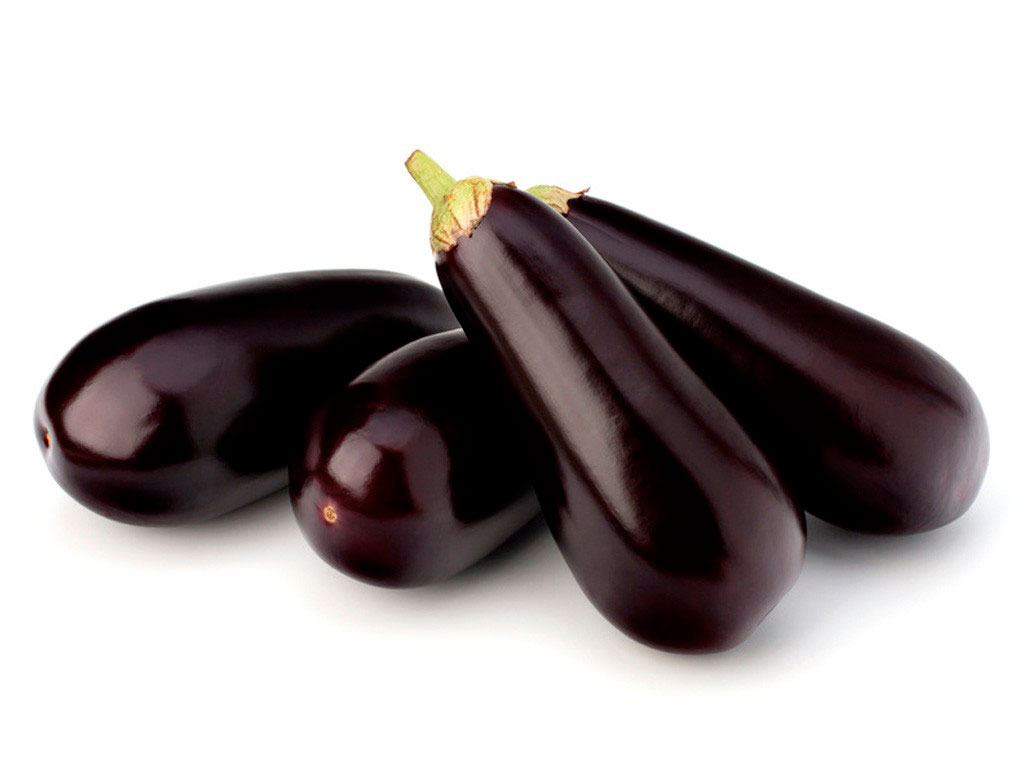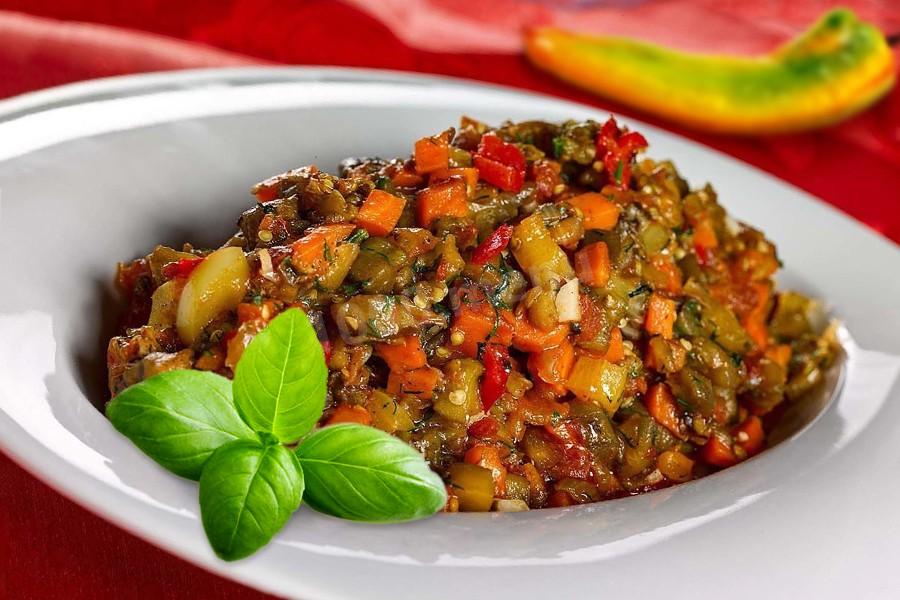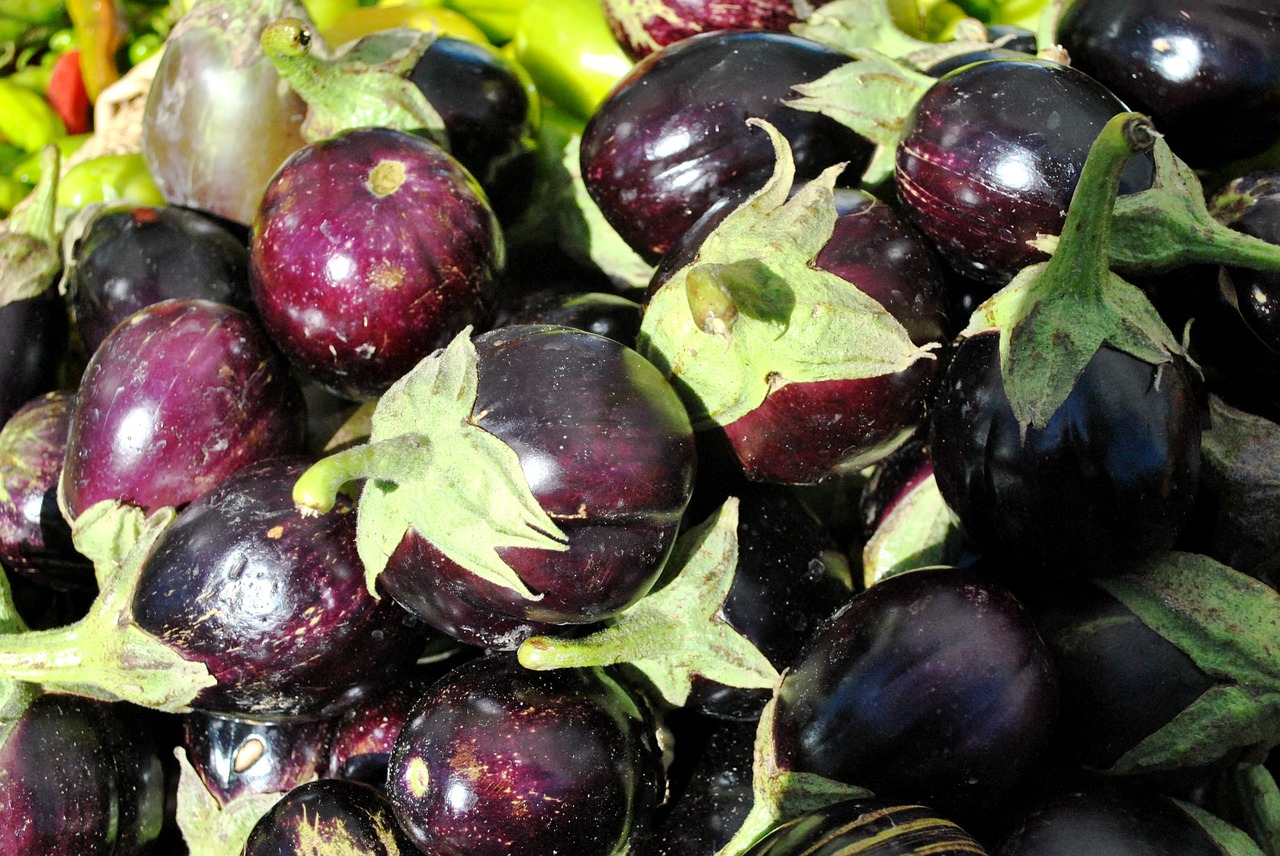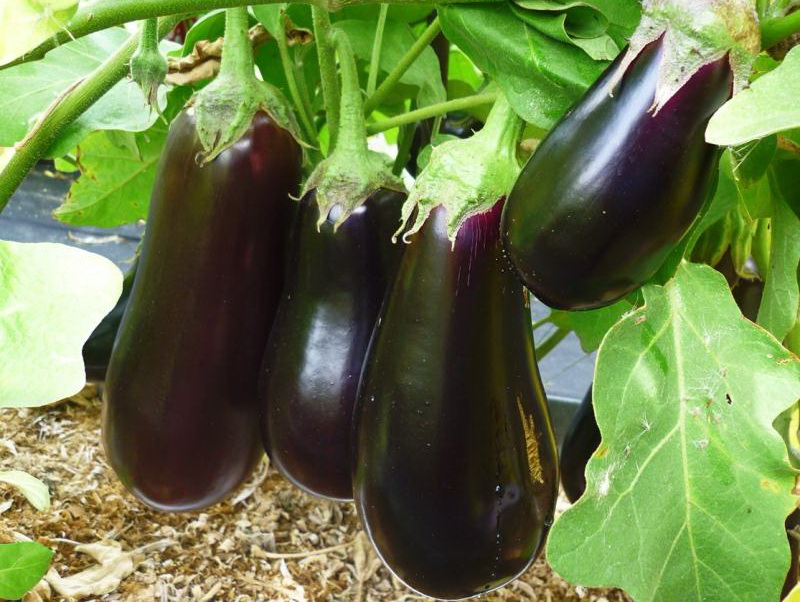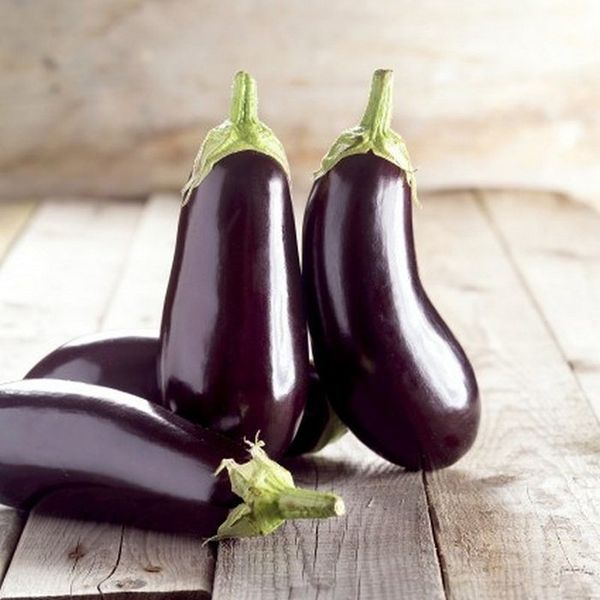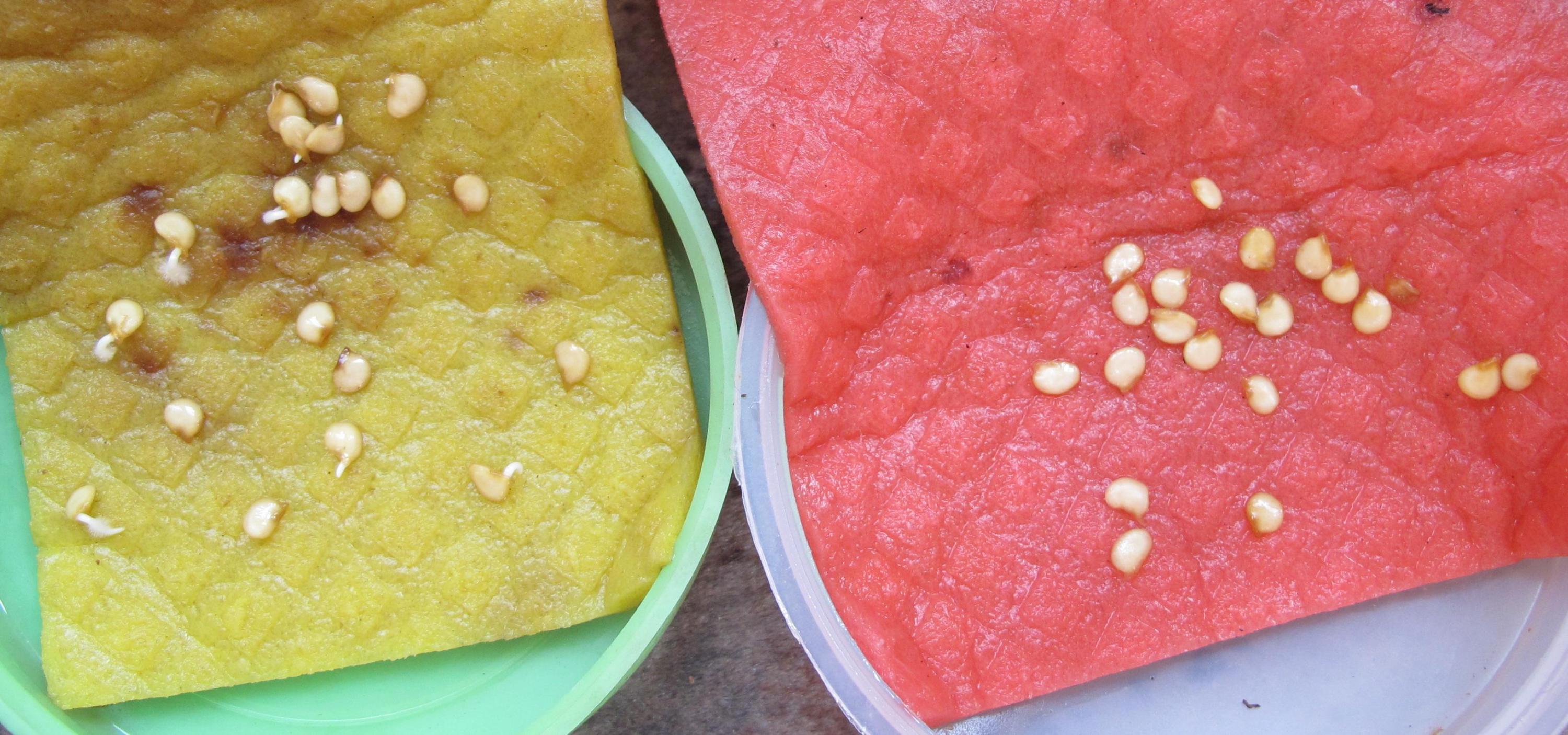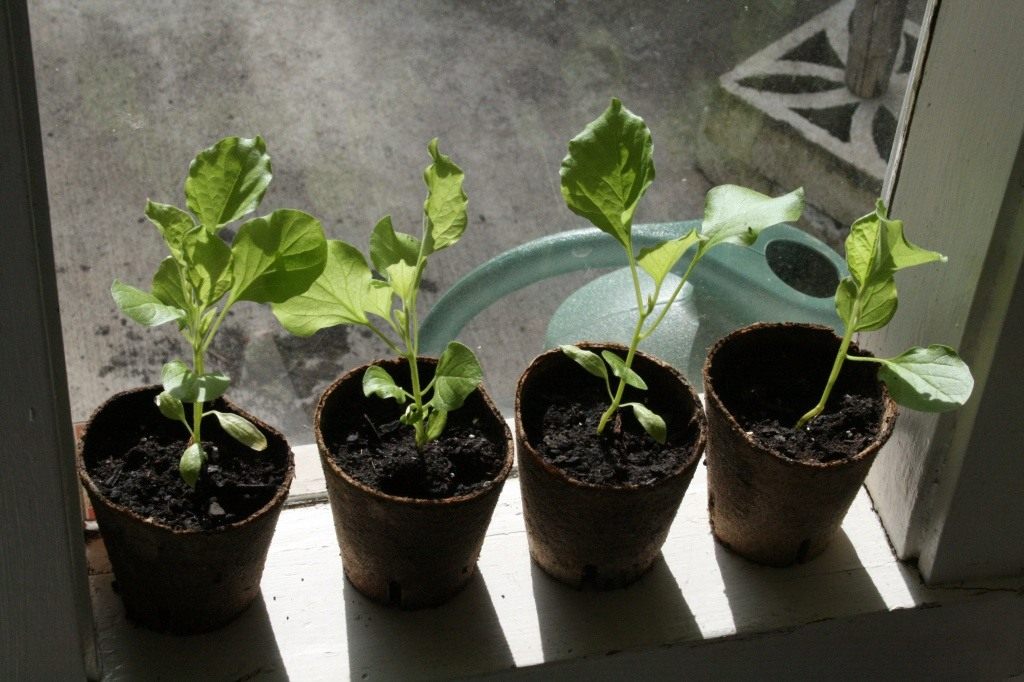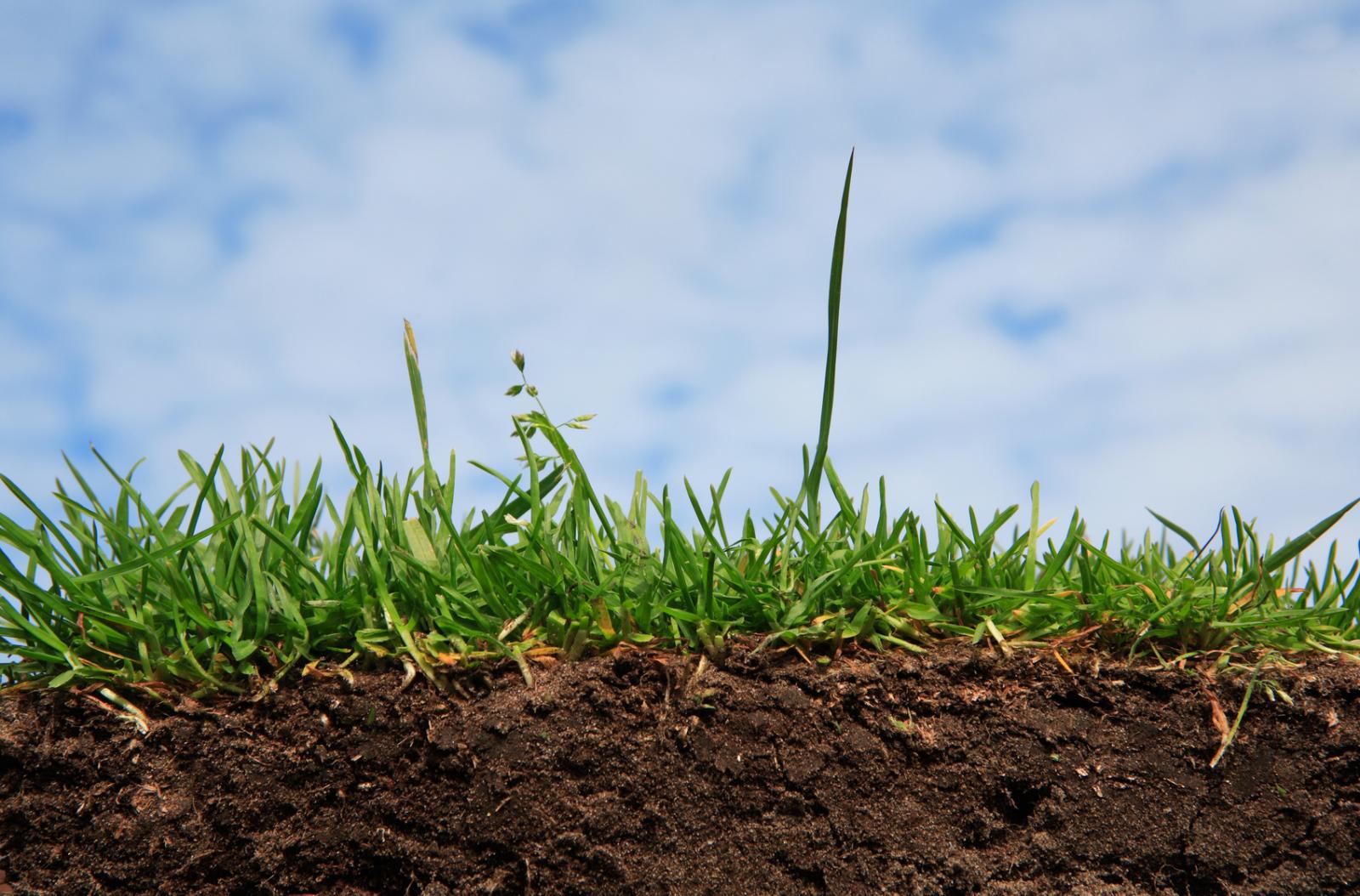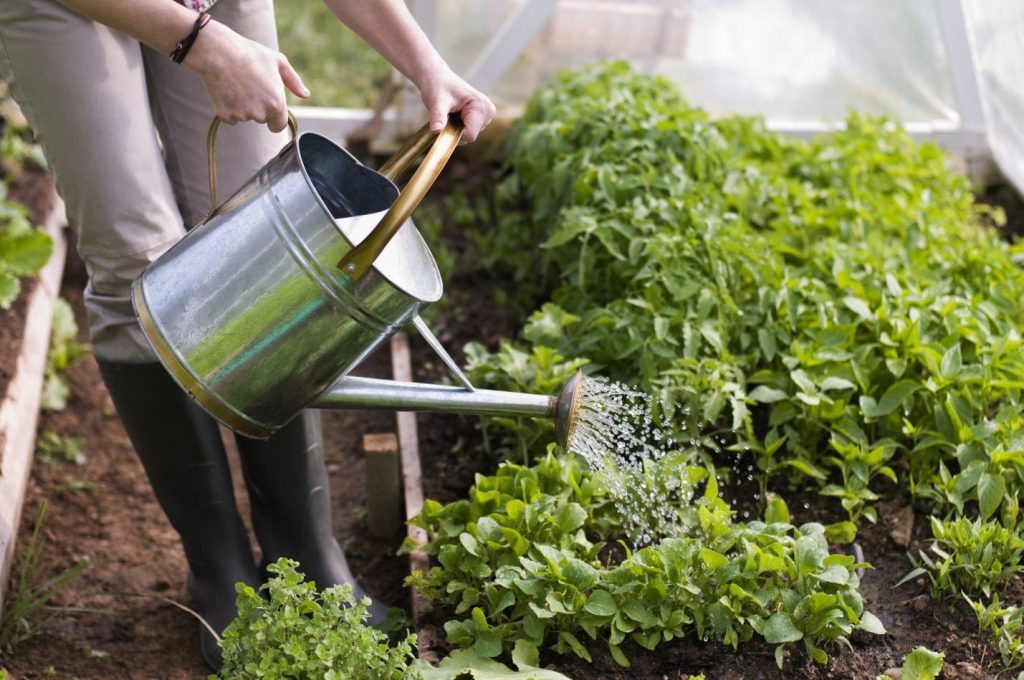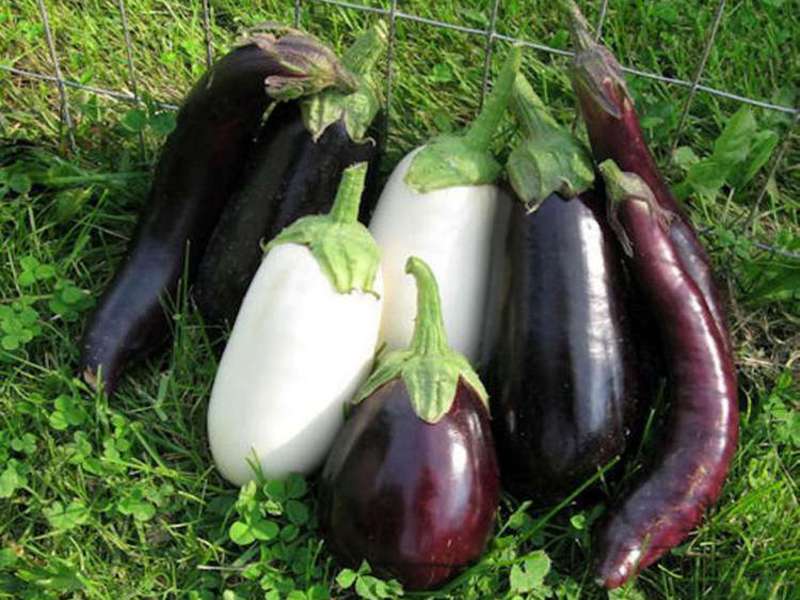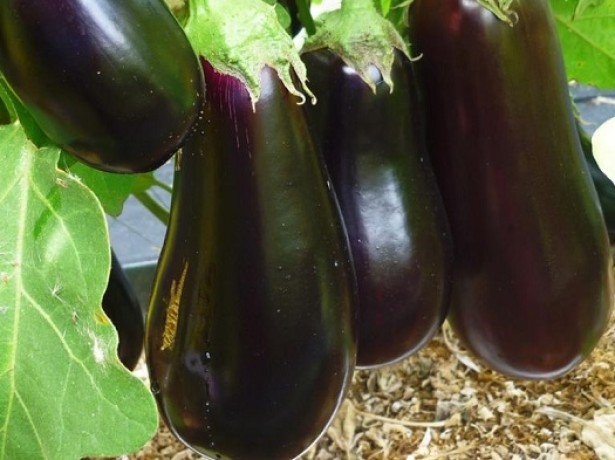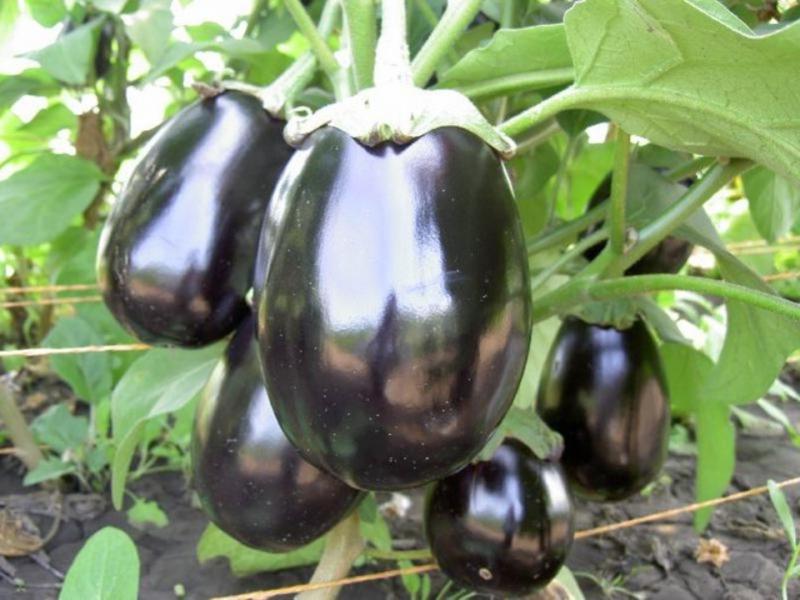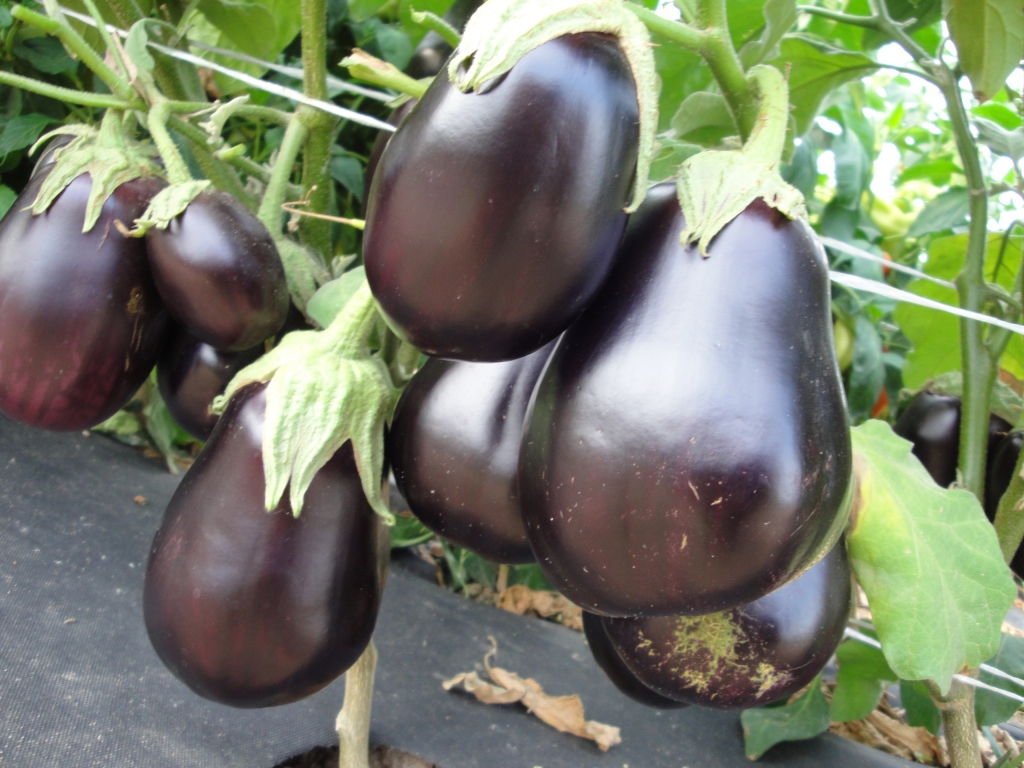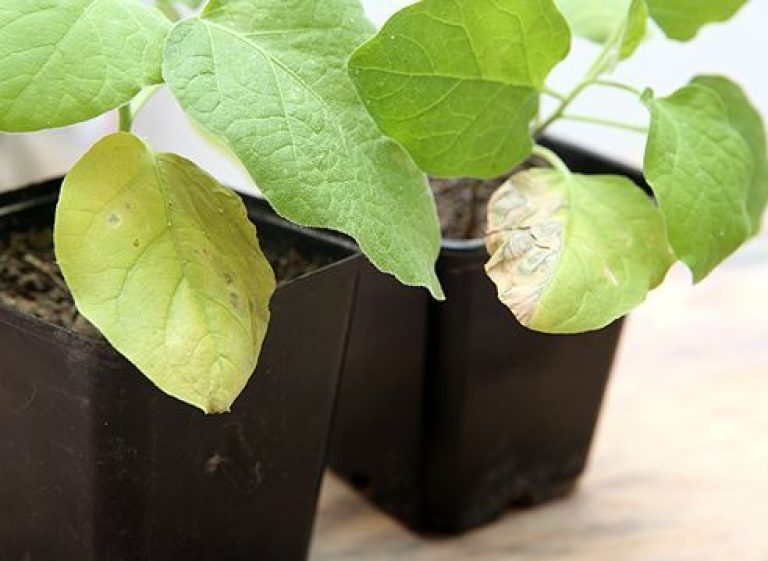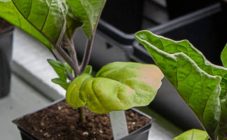Content:
What forms, colors, sizes and varieties of eggplants have not been bred by modern breeders. From the traditional in Mother Russia dark purple to small, colored, cylindrical, spherical, pear-shaped and even egg-shaped. Moreover, the weight of eggplant fruits can vary from 30 grams to 2 kg.
The homeland of eggplant is India, the Middle East and South Asia. In those parts it is called a longevity vegetable. You can still see the ancestors of modern eggplants there, growing in the wild. They began to take care of the vegetable and domesticate it about 1500 years ago. Eggplant came to European countries by the middle of the 15th century, but it was widely used only in the 19th century.
How is eggplant useful?
Eggplants prevent the development of diabetes, tuberculosis, and cancer. The vegetable is useful for the prevention and treatment of the cardiovascular system, gastrointestinal tract, atherosclerosis, obesity, metabolic disorders, gout, kidney, liver, constipation.
Eggplant contains:
- carotene;
- phosphorus;
- iron;
- potassium;
- calcium;
- B vitamins;
- fiber;
- polyphenols.
Eggplant caviar alone is worth something. And how many different recipes for salads and winter preparations. And also his:
- boiled;
- fried;
- stew;
- pickle;
- bake;
- grilled;
- eaten raw.
Characteristics of the best varieties
Agate. It is famous for its high yields and unpretentiousness to climatic conditions. Agate eggplant can be sown directly on the site at the end of May, but the seedlings must be covered with a film. Ripens on day 110. Oblong, dark purple, small in size. Disease resistant. Harvest up to 8 kg / sq.m. It does not need soaking before cooking.
Sancho Panso. The peculiarity of the variety is its resistance and ability to withstand rather low temperatures. Excellent for growing outdoors. The shape of the fruit is interesting - a dark purple ball weighing about 600 grams.
Albatross. Mid-season. Differs in very high yields - 9 kg / sq.m. It is characterized by good resistance to diseases such as tobacco and cucumber mosaic. But at the same time it can suffer from other diseases.
King of the North. Great for growing in the middle lane and even northern regions, as it tolerates cold well. It is famous for its excellent taste. This variety is harvested in July, receiving up to 15 kg / m2. The earliest variety among hybrids.
Eggplant Black Prince. Compiling a general characteristic and description of the Black Prince eggplant variety, one can confidently indicate its high yield and good taste. The length of the fruit is about 25 cm, and the weight is up to 1 kg. The eggplant is purple in color, can be transported well and tolerates storage. It responds with a rich harvest for irrigation, warm weather and sun.
Eggplant Epic... An early and very productive variety, producing about 8 kg / m2. Fruits are oval-conical, black-purple, fruit weight up to 235 grams.
Eggplant varieties Alekseevsky. Among the best for the early ripening period. Harvesting in 90-100 days. Fruits are dark purple from 100 to 250 gr. weight. Very resistant to disease.
Long purple eggplant. Very early ripening, compact, up to 50 cm high. Fruits are elongated, weighing up to 300 grams.
Samurai Sword eggplant. Medium early - collection in 110-120 days. Differs in drought resistance. And it also easily restrains diseases, and does not give in to spider mites and the Colorado potato beetle. Fruit weight up to 200 gr., Dark purple color.
Eggplant Roma. Hybrid, early maturing. In vegetable growing, he was recognized for its high yield and versatility. The variety is tall (shoots up to 2 meters). It boasts a powerful bush and fruits weighing up to 250 grams. The yield is about 5 kg / sq.m.
Baron eggplant. Early maturing, versatile, of excellent taste and high commercial quality. The average fruit weight is about 325 grams. with yields up to 7 kg / sq.m.
Eggplant variety Universal. Mid-season, tall (up to 90 cm), but compact. Fruits up to 180 gr., Without bitterness. Harvest up to 7 kg / sq.m.
Eggplant varieties Galich. High-yielding and mid-season. Fruit weight up to 200 gr. Deep purple, no bitterness.
Bourgeois eggplant. Early ripening, but capable of bearing fruit before frost. Resistant to many diseases. Tall, powerful bush, fruits up to 600 gr., Round, violet-pink, without bitterness.
How to plant eggplants correctly
The problems in growing this vegetable include:
- this is one of the most capricious cultures in terms of care;
- fluctuations in temperature can cause the ovaries, flowers or buds to fall off;
- cold temperatures can lead to the death of eggplant;
- increased requirements for light;
- requires great care when transplanting, as it does not tolerate root damage;
- with prolonged cloudy weather or increased thickening in the rows, plant growth slows down, and the fruits grow small.
Best predecessors:
- cucumbers;
- bow;
- legumes;
- cabbage;
- winter wheat.
Seed preparation and sowing
First you need to prepare the soil mixture. Take humus, turf and sand in a ratio of 2: 1: 1. It is only necessary to first pour boiling water over the sand and steam it for 15 minutes. This will disinfect the sand from various diseases, for example, black leg. Then for 1 bucket of such a mixture you need to add a couple of tablespoons of ash and 60 gr. superphosphate.
When germinating seeds, the temperature should not drop below + 15 ° C, otherwise they will not germinate. The best temperature is from +22 to +26 degrees Celsius.
Soak eggplant seeds in water for 10 minutes at a temperature of 50 ° C. Then drain the water, place the seeds on a damp cloth and leave for about 5 days, preventing the matter from drying out.
When half of the seeds have sprouts, they should be planted in separate pots. Or, as a last resort, just in low boxes 10-12 cm high. Seeds are sown 0.5 cm deep and 10 cm apart. After placement, they need to be watered and covered with plastic wrap on top until the first sprouts appear.
Then the film is removed, and the pots with sprouts are placed in lighted places: window sills, verandas, greenhouses or a polycarbonate greenhouse.
The first watering of seedlings should be done only for 2 or 3 days. And then on every 5th day.
When the first two leaves appear, the seedlings can be supplemented with fertilizers of urea, superphosphate or potassium salt. After half a month, repeat the feeding.
Planting seedlings
The soil should be prepared in advance from late summer or early fall.
- Add ammonium nitrate 40 g., Potassium chloride 30 g. and superphosphate 60gr. for 1 sq. m.
- Nitroammofosk 60 gr. per sq. m.
Well-fertilized and light soils are best suited for eggplant. As well as floodplain and wind-protected sunny areas.
Should not be planted on heavy, compacted soils prone to crust formation. This will depress the plants and stun their growth.
To plant eggplant seedlings for open ground in central Russia should be with a well-developed root system, at the age of 70 to 80 days. In this case, the shoots must have at least five leaves. The seedlings reach this state by about the end of May or at the beginning of June.
It is also very important to harden the seedlings before planting. To do this, during the day, pots with seedlings should stand at a temperature of + 15 ° C, and at night up to + 10 ° C. This preparation will help young plants to better adapt to the varying temperature changes that will lie in wait for them in their natural outdoor environment.
When the soil warms up over + 13 ° C, holes are dug 15-20 cm deep and wide, according to the 60x60 scheme. Pour 2 liters into each well. water and plant seedlings along with a clod of earth from the pot, otherwise the seedlings may not take root. In addition to water, you can add 400g of well-decomposed compost to each well. per hole.
10-15 days after planting, the seedlings are fed:
- fermented mullein solution 1: 5 for 2 or 3 days;
- wood ash 200g. for 10 liters. water;
- chicken droppings in a ratio of 1:15.
Features of care and cultivation
To enhance the branching of the stem, it is necessary to pinch its tops at a height of 25-30 cm. If the plant is properly formed, it should have 3-4 lateral shoots and 5 or 6 fruits spaced evenly. Excess peduncles and ovaries must be removed.
The ideal temperature for the favorable growth of a vegetable is from + 25 ° C to + 28 ° C. In the fruiting phase, the eggplant really needs good watering. The moisture content of the soil must be at least 80%. You should beware of weather jumps: too high, more than +28 degrees, or very low temperatures, excess moisture, cold weather or drought. This can cause the ovaries to fall off.
During the period of fruit formation, it is required to feed with phosphate-nitrogen fertilizers - add a teaspoon of ammonium nitrate and 1 tbsp. a spoonful of superphosphate.
The main pest of eggplant is the Colorado potato beetle. But when carrying out chemical treatment, it should be remembered that this cannot be done at a time when the ovaries are forming.
Watering plants
Water the eggplant regularly and thoroughly. It is desirable that it was warm, settled water not lower than + 24 ° C. Otherwise, it can lead to slower growth.
After planting, you need to water in 2 days, and then, the next watering should be done in another 3 days.
Before the flowering period, the plants are watered once a week, pouring about 10 liters per 1 sq. meter.
During flower formation and during fruiting, watering is repeated every 4 or 5 days. It is not necessary to water rarely, but a lot, as this waterlogs the soil, which is also harmful for eggplant.
The crust formed after watering must be loosened.
The best varieties of eggplant for growing in the Moscow region
It is necessary to choose varieties of eggplant for the Moscow region taking into account the climate of the region and the characteristics of individual species.
The best in this case are:
- Agate F1.
- Alenka.
- Albatross.
- Don Quixote.
- Giselle F1.
- King of the North.
- Romantic.
- Sancho Panza.
It is these varieties and hybrids that are best suited, as they are early, easily tolerate planting in open ground and boast a fairly good harvest. At the same time, they tolerate low temperatures relatively easily and resist species diseases well.
Of course, growing eggplant has some difficulties and peculiarities. But if you follow these recommendations correctly, you can collect an excellent harvest of a tasty and healthy vegetable on your site, surprising literally everyone.
